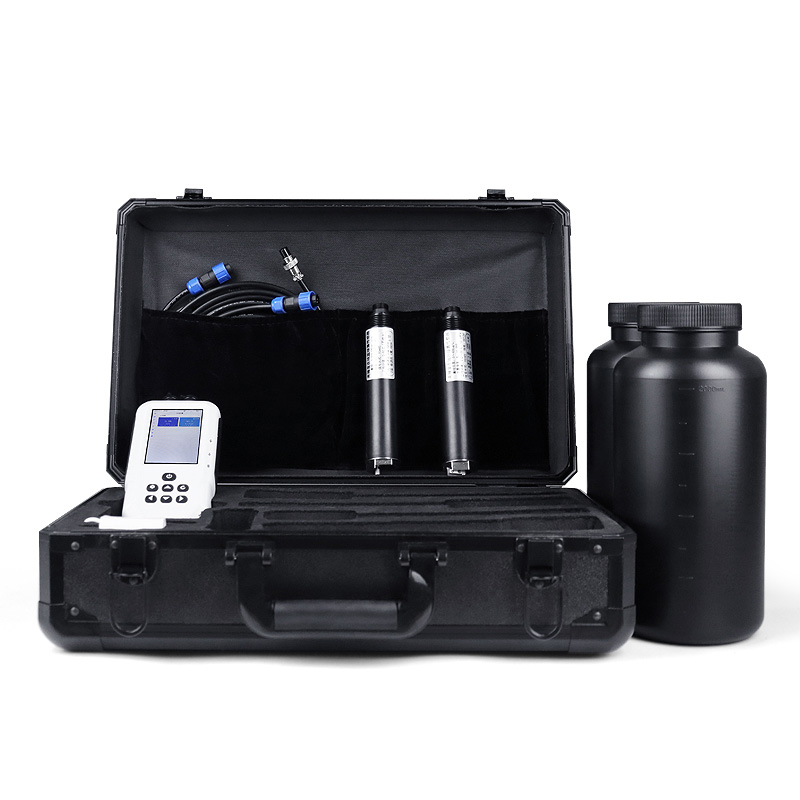Tianqiong Sensor IOT Technology Co., Ltd
Sales Manager:Ms. Emily Wang
Cel,Whatsapp,Wechat:+86 15898932201
Email:info@fengtutec.com
Add:No. 155 Optoelectronic Industry Accelerator, Gaoxin District, Weifang, Shandong, China

Sales Manager:Ms. Emily Wang
Cel,Whatsapp,Wechat:+86 15898932201
Email:info@fengtutec.com
Add:No. 155 Optoelectronic Industry Accelerator, Gaoxin District, Weifang, Shandong, China

Model:FT-SS02
Brand:tianqiong
1.Product introduction of Blue Green Algae Test
Blue Green Algae Test uses fluorescence to find out whether there is blue-green algae in the water and can detect most floating blue-green algae.Blue Green Algae Test is an electrode-based water quality analysis instrument that uses all-digital electrode detection to detect two parameters of water quality chlorophyll and blue-green algae.The instrument is equipped with a self-developed FTIOT operating system, which has simple operation, stable performance, accurate measurement, wide detection range, and has a built-in high-capacity rechargeable lithium battery, which is convenient for users to conduct water quality inspection at any time in the field and in the laboratory.
2.Blue Green Algae Test host parameters
| Charging input voltage | 4.5V-5.5V |
| Charging current | <2A |
| Screen size | 3.5 inches |
| Screen resolution | 480*800☆ |
| Screen interface | MIPI DSI☆ |
| USB port | 2 (Support external expansion of mouse, keyboard, 4G, etc.)☆ |
| Type-C | 1 (Support external expansion of mouse, keyboard, 4G, etc.)☆ |
| RS485 | 2 (Support Modbus, json, asc input, etc.) |
| External sensor power supply voltage | 12V |
| External sensor power supply current | 1A |
| operating system | ftiot (based on Linux-5.4)☆ |
| CPU | 2*Cotex-A7, 650Mhz☆ |
| RAM | 512M DDR3☆ |
| Flash | 8G-64G |
| OpenGL | ES 2.0☆ |
| Wifi | support |
| 4G | Selection |
| button | support |
| Capacitive touch screen | support |
| Software Architecture | B/S☆ |
| Web access | Support ☆ |
| MTP mode | Support ☆ |
| Multi-terminal login | Support ☆ |
| IPV6 | Support ☆ |
| Sensor communication method | RS485, TCP, UDP, Http☆ |
| Data forwarding method | RS485, TCP, UDP, Http☆ |
| Remote SSH | Support ☆ |
| Remote debugging | Support ☆ |
3.Blue Green Algae Test sensor parameters and configuration
| Serial number | name | Measurement range | principle | Measurement accuracy | Resolution | Configuration | Remark |
| 1 | temperature | 0~50℃ | High-precision digital sensor | ±0.3℃ | 0.01℃ | ||
| 2 | pH | 0~14 (ph) | Electrochemistry (salt bridge) | ±0.1PH | 0.01 | ||
| 3 | ORP | -1500mv~1500mv | Electrochemistry (salt bridge) | ±6mv | 1mV | ||
| 4 | Conductivity | 0~5000uS/cm, 0~10000uS/cm | Contact electrode method | ±1.5% | 1uS/cm | ||
| 5 | TDS | 0-10000ppm 0-200ppt | Contact electrode method | ±1.5%; ±0.1°C | 1ppm 0.01ppt | ||
| 6 | salinity | 0-10000ppm 0-200ppt | Contact electrode method | ±1.5%; ±0.1°C | 1ppm 0.01ppt | ||
| 7 | Sludge concentration | 0~20.000g/L | Scattering light method | ±5% (depending on sludge homogeneity) | 0.001g/L | ||
| 8 | Turbidity | 0~40NTU (low turbidity) | Scattering light method | ±1% | 0.1NTU | Optional | |
| 0~1000NTU (medium turbidity) | Scattering light method | ±1% | |||||
| 0~3000NTU (high turbidity) | Scattering light method | ±1% | |||||
| 9 | Dissolved oxygen | 0~20mg/L | Fluorescence life method | ±2% | 0.01mg/L | ||
| 10 | Ammonia nitrogen | 0-1000.00mg/L (default) 0-100.00mg/l/ (customizable) | Ion Selection Electrode Method | 10% of reading, ±0.5℃ | 0.01mg | ||
| 11 | Suspension | 0~2000mg/L | Scattering light method | ±5% (depending on sludge homogeneity) | 0.1mg/L | ||
| 12 | Residual chlorine | 0~5.00mg/L | Ion Selection Electrode Method | ±5% of reading | 0.01mg/L | The best accuracy is when the flow rate is 0.42m/s-0.85m/s | |
| 13 | Chloride ions | 0-3500.0mg/L | Ion Selection Electrode Method | ±5% | 0.1mg/L | ||
| 14 | Total hardness | 0~1000.0mg/L | Ion Selection Electrode Method | ±10% of reading | 0.1mg/L | ||
| 15 | cod | 0~500mg/L | UV254 absorption method | ±5% | 0.1mg/L | COD, chlorophyll, and blue-green algae are equipped with automatic cleaners, which can prevent biological adhesion and avoid light window pollution, so as to ensure that long-term monitoring is still stable; automatic cleaning time and cleaning times can be set, and the power consumption is 0.7W | |
| 16 | Chlorophyll | 0~400ug/L | Fluorescence method | R2>0.999 | 0.01ug/L | ✔ | |
| 17 | Blue-green algae | 0~200.0Kcells/mL | Fluorescence method | R2>0.999 | 0.1Kcells/mL | ✔ |
Portable Weather Station integrates meteorological monitoring with flexible mobile platforms, providing convenient and efficient meteorological data monitoring services for various scenarios.Designed to be compact and small in size, it is easy to install on special vehicles such as emergency rescue...
In traditional agricultural production, there has always been a problem of lag in crop disease prevention and control. Farmers mainly rely on experience to judge diseases, and by the time obvious symptoms appear in the field, certain losses have often been caused. Blind use of pesticides is also com...
Rainfall is one of the important water cycle links in nature. Accurate measurement of rainfall is of great significance for agricultural irrigation, urban flood control, water resource management, meteorological research and other fields, as it provides key data support for decision-making in these...
Climate change is leading to more frequent and intense extreme weather events (such as droughts, floods, heatwaves, and late spring cold snaps). These weather events cause devastating impacts on agricultural production. Traditional, experience-dependent farming models struggle to cope with this unce...